A Forgotten Kingdom
By Ali Bhutto | Heritage | Published 8 years ago
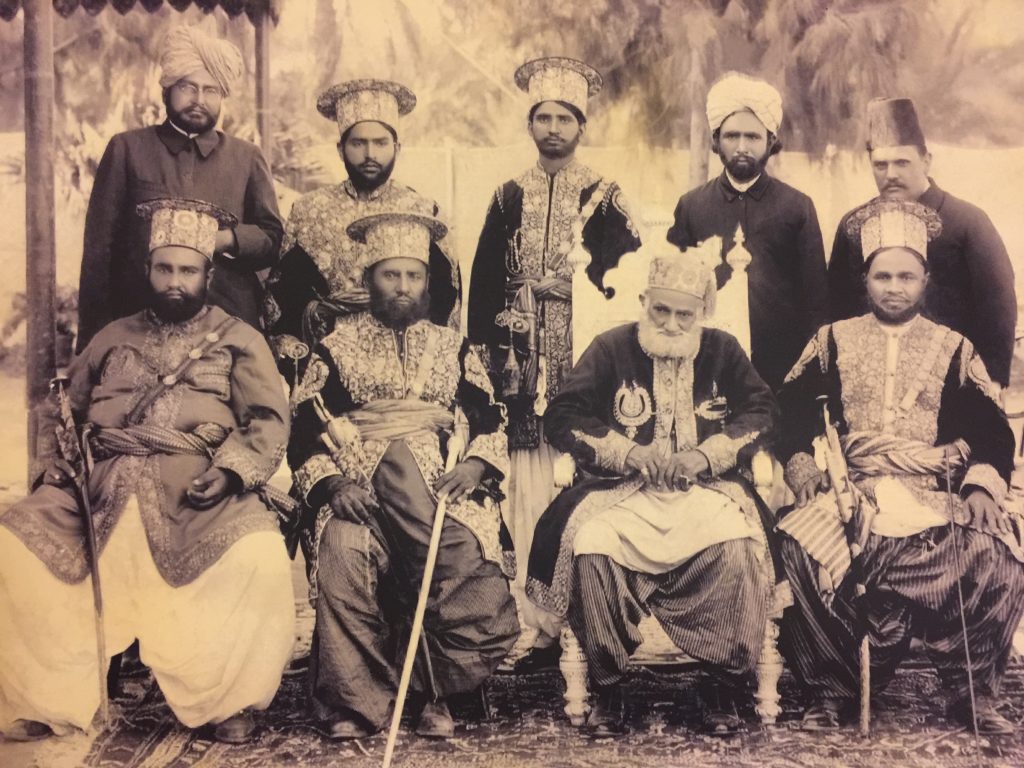
On the edge of the desert in Khairpur District, a cluster of ghostly bungalows and ornate halls of audience make up the remnants of a royal court. They point to an earlier era of aesthetic fusion between East and West. Casting its protective shade over these is a hilltop fort. Its towering ramparts have gazed down at travellers for over two centuries.
These relics, camouflaged in dust in the village of Kot Diji, belong to the Khairpur branch of the Talpurs, who ruled Upper Sindh from 1783 till 1843. Thereafter, until Partition, they continued to reign over an autonomous Native State carved out for them by the British.
The approach to the village of Kot Diji from the old national highway is marked by a sudden change in topography. A flat and fertile alluvial plane is interrupted by the emergence of isolated hillocks. These limestone formations are part of a greater ridge of hills that runs south from Rohri, known as ‘Gharr.’ The sweltering heat of a May afternoon is overshadowed by a mountain of rainclouds moving in from Naara and the Indian border – the eastern peripheries of Khairpur District. Kot Diji is located at the exact spot where the fertile green plain that lies to its west gives way to the desert that sprawls eastward, to Jaisalmer and beyond.
After the Talpurs seized Sindh from the Kalhoras in 1783 and divided it up between themselves into three independent units, Mir Sohrab Talpur established his court in Khairpur. Having two sons from Talpur wives, Mir Sohrab took a third wife from the house of a Marri nobleman. This marriage gave birth to his youngest son, Mir Ali Murad I. In 1830, while at Sohrab Manzil in Khairpur, Mir Sohrab mysteriously fell off its balcony while watching a Muharram procession, and died soon after. The current members of his family suspect that he may have been pushed off. They feel it would have been particularly difficult to fall off a balcony that was surrounded by a chest-high brick wall.
Mir Mehdi Raza represents the current generation of the Talpur dynasty. He is the son of Mir Ali Murad II and a direct descendant of Mir Sohrab (seven times removed). According to Mir Mehdi, “Some members of the family took exception to Mir Sohrab adding his youngest son’s name to his will. The fact that his mother was not a Talpur made it unacceptable to them.” Nevertheless, Mir Sohrab’s youngest son, Mir Ali Murad I, ascended to the throne in 1842, the year General Charles Napier arrived in Sindh.
The more discerning visitor may notice that the old structures in Kot Diji and Khairpur, in all their magnificence, would not have made practical residences. And while today they may be passed off as ‘palaces’ or ‘bungalows,’ their owners confirm that with the exception of one or two, they were not meant to be living quarters, but darbars (courts). At the time they were built, their owners preferred living in tents.
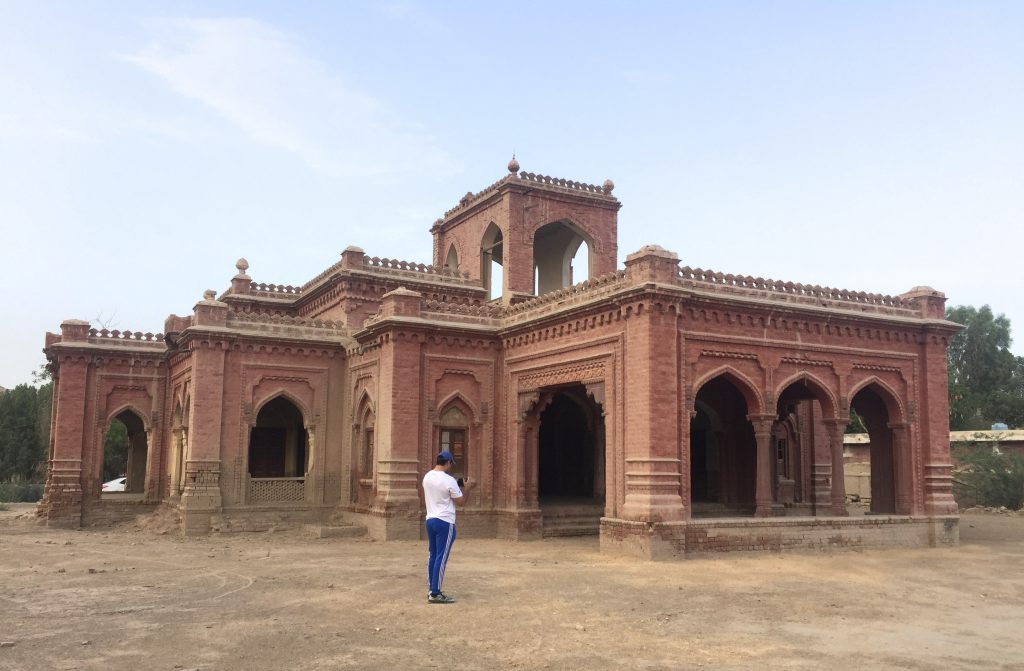
Madame’s Bungalow in Kot Diji, built in the 1890s. (Photography by Ali Bhutto)
Mir Mehdi told Newsline that up until (and including) his great-grandfather’s generation, living in tents was the norm for the Talpurs, who were nomadic Baloch tribesmen. “While women and children lived in houses,” he explains, “it was considered unmanly for men to do so.” The heat was never a problem, he says, as “these people were out hunting for most of the time, even in peak summer. Therefore, they were adjusted to the hot climate.” The tents were usually made of velvet, or in some cases, tiger skin, the latter having been gifted to Queen Victoria by Mir Ali Murad I. Mir Mehdi learnt of these habits from his father, who was told by his father, and in this manner, details of day-to-day living were handed down from one generation to the next. They are backed up by the memoirs of British travellers, who witnessed them first hand.
Edward Archer Langley, a former captain of the Madras Cavalry, spent a substantial period of time in the court of the then Rais (turban-holder), Mir Ali Murad I, in 1857-8. In his memoir, A Narrative of a Residence in the Court of Mir Ali Moorad, while commenting on the Mir’s bungalow in Kot Diji, Langley observes that the Mir “Never occupies the house; but passes his days in a Landee [shed] in front, and sleeps in a small tent close to the building.” Langley further notes, “His Highness… rarely sleeps three nights running in the same spot, for his habits are exceedingly nomadic, and even when in a city he generally sleeps in a tent.”
The bungalow Langley refers to, no longer exists. In its general vicinity stands Shahi Mahal. The previous bungalow, reports Langley, had interiors painted in fresco and was located “in the midst of a garden of… twenty acres, enclosed with a high wall.” Within this wall roamed numerous wild boars and crosses between wild boars and English sows, which would often charge at gardeners and court jesters alike, much to the amusement of the Mirs. The layout of this darbar, Langley describes, was similar to the old residency of the British political agent in Khairpur.
British explorer Charles Masson passed through Khairpur in 1829, while Mir Sohrab was still alive, and saw his court, Sohrab Manzil, from the outside. In his Narrative of Various Journeys, he notes that the Mir’s “palace” was located in the “the very centre of the bazaars,” that its boundary wall contained battlements, and that “from the exterior, the only prominent object is the cupola of the masjit [masjid], decorated with green and yellow painted tiles.” By the time Langley saw it, almost three decades later, “the ruinous old house,” which stood within “the crumbling walls of a mud fort,” had fallen into disuse and was completely empty. “As the place reminded Mir Ali Murad of his father’s death,” explains Mir Mehdi, “he avoided staying there altogether.” Instead, he would pitch tent in a garden called ‘Dobagh,’ on the outskirts of the town.
Langley, it appears, did not have an eye for detail. Limited perhaps by cultural differences, he fails to elaborate on the appearance of the tents, and insinuates that living in them demonstrated a lack of civilisation. Marianne Young, wife of Captain Thomas Postans of the Bombay Army, on the other hand, displays a more acute sense of observation. In her May 1843 article for The Illuminated Magazine, a monthly publication based out of London, Young describes Mir Ali Murad’s tent as being “made wholly of bright crimson cloth, richly embroidered, and surrounded with an outer wall, to keep off the people. The interior,” she continues, “was decorated with hanging lamps, rich Persian carpets, and large cushions of purple velvet, worked with seed pearls and gold, while the entrances were sentinelled with a body guard, dressed in a uniform similar to that worn by the soldiers of the Punjab.” She adds that “Of all the princes of Sindh… I was most charmed by Meer Ali Moorad of Khyrpoor, who is the very beau-ideal of a strong-hearted and independent chief.”
The custom of living in tents was not primitive, but served a practical purpose. It enabled the Mirs to remain in a constant state of transience, which best suited their passion for sport. Being land-owning barons, it also allowed them the mobility to inspect their territories and subjects. There would be little inconvenience or fatigue, since their ‘home’ would move with them wherever they went. At the same time, constantly being on the move provided security. An enemy could not plan a strike, since it would have been hard to predict where the Rais would decamp to next. Langley reports that Mir Ali Murad “will never allow his people to know where he means to halt for breakfast, and his intending sleeping place is even kept a more profound secret.”
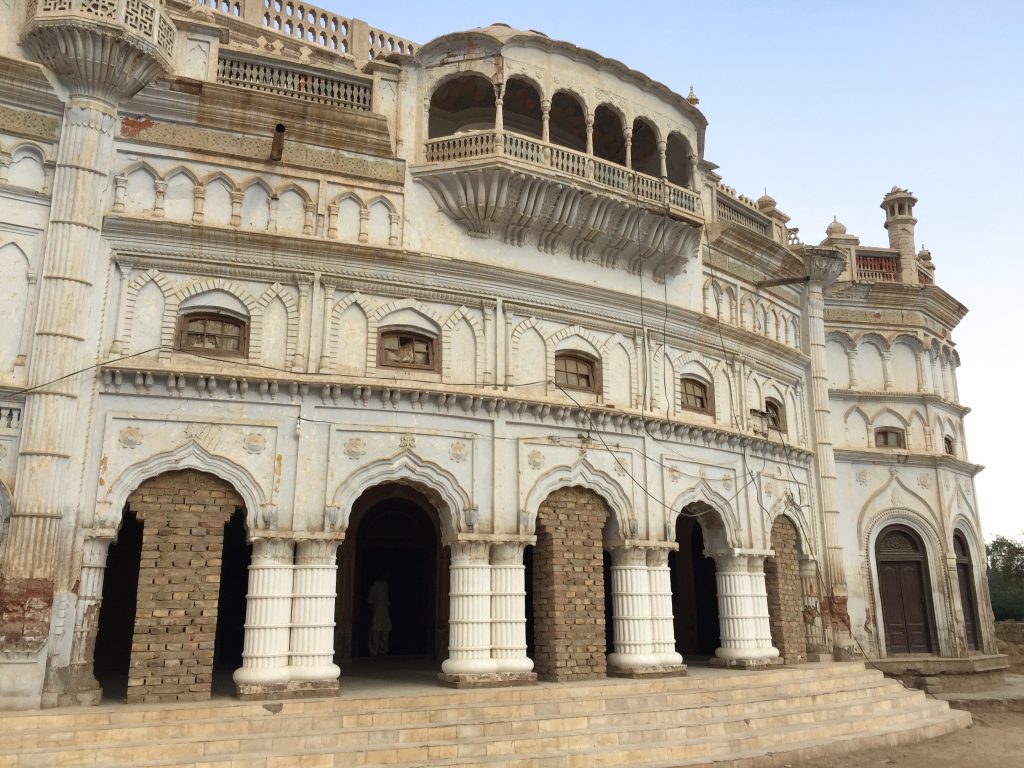
Sufaid Mahal, built in the 1890s as a darbar.
Langley again generalises when he says that “The entire household furniture of Khyrpoor can be comprised in a single word, ‘the charpoy’… for neither table nor chair does His Highness possess.” Young, in her article, describes the “magnificent posts of a charpoy, or native bedstead,” being “encrusted with precious stones, emeralds and rubies; the value of each… estimated at two hundred guineas.”
Since only women and children lived indoors, the oldest known zenana of the Mirs of Upper Sindh is located inside the fort of Kot Diji, built in the 1780s by Mir Sohrab. The zenana’s ceiling was, according to Mir Mehdi, once inlaid with decorative mirror work, which served the function of multiplying/reflecting the light of candles and lanterns at nighttime. From 1811 onwards, it was here that Mir Sohrab spent the latter part of his career – in a tent outside the zenana – watching Mir Ali Murad I grow up. By the 1850s, the zenana had already moved outside the walls of the fort, and into the village of Kot Diji.
Like families, bungalows and fortresses too have generations. The first generation of monuments of the Mirs, described in detail in nineteenth century memoirs of various British visitors, were made when the family first established its foothold in Upper Sindh. Other than the fort at Kot Diji, none of these remain. The second generation of bungalows and autaqs (halls of audience) came up in the 1890s, during the reign of Mir Faiz Mohammad I. It is these that can be seen today in Kot Diji and Khairpur. Like their predecessors, they were used to receive and entertain important guests. According to Mir Mehdi, Mir Faiz Mohammad’s advisors and viziers emphasised the need for impressive-looking darbars as tokens of sophistication and stature, where British officials could be hosted. And so, they were erected, explains Mir Mehdi, “to keep up with the Joneses.” Architect Arif Hasan points out, “They were made at a particular time, when there was a merger of the European revival styles and local classic Indo-Islamic architecture.” Thus, he says, they are a mélange of many styles.
In the late 19th century, an increasing number of halls of audience, based on a common prototype, could be seen on the estates of Sindh’s nobility. According to Dr Anila Naeem, Co-Chairperson of the Department of Architecture and Planning at NED University, “Colonial-vernacular hybrid architecture became a symbol of wealth, power and prestige. Hence we see examples of it all over the region, commissioned by the nobility and later by the upcoming class of zamindars or waderas.” Over generations, some of the darbars were transformed into living quarters. A number of these ancestral properties survive across the province.
According to Mir Mehdi, the sizzling temperatures in Sindh did not permit structures as elaborate and palatial as those found in princely states. While the layout was kept relatively simple, the focus of the design was to enable an effective cooling system and airflow. This is why the Mirs’ bungalows are surrounded on all four sides by arched verandas up to 12 feet wide. The thick, brick-and-lime-mortar walls keep out the heat in summer and the cold in winter. The diwan-e-aam, or the hall of audience, lies at the very centre of the structure, its ceiling significantly higher than the rest of the bungalow. At the very top of its four walls are windows (badwaan), through which hot air escapes the building. The latticework covering the verandas is lined with mats made of khus-khus leaves, which, if sprinkled with water from the outside, have a cooling effect on the air that flows through them.
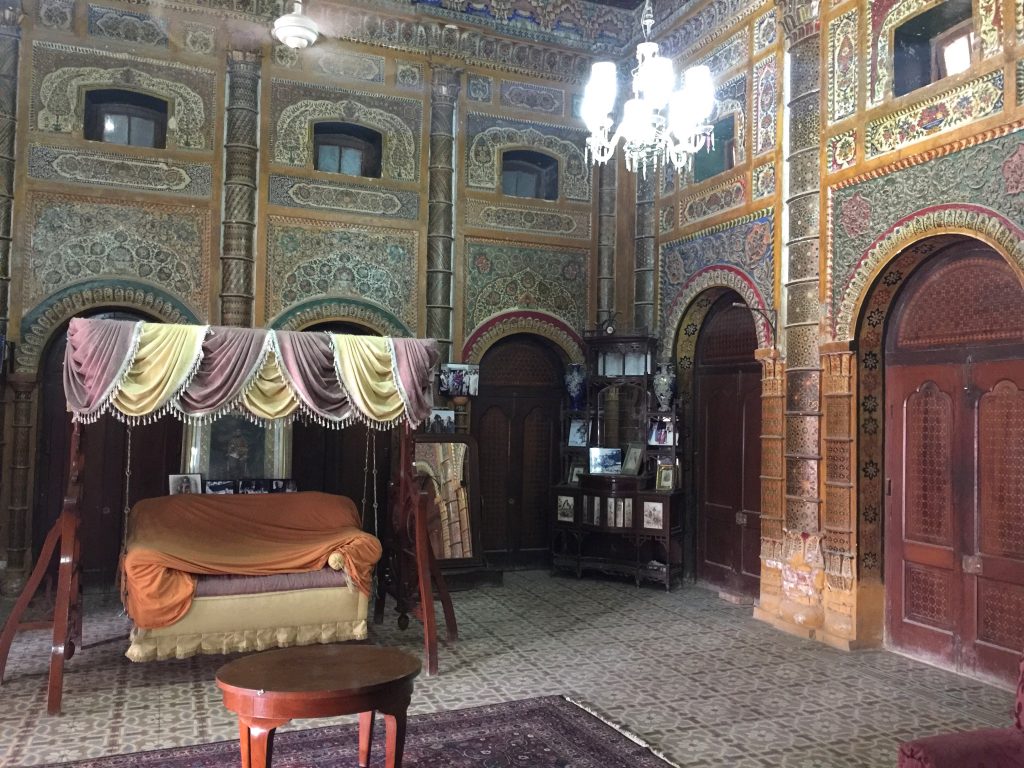
The hall of audience inside Sufaid Mahal.
Mir Mehdi’s grandmother, who witnessed the transition from this old-fashioned system of cooling to that of the air conditioner, never felt comfortable in the recycled air of the latter. But even as early as the 1850s, there already existed in the subcontinent, a precursor to the air conditioner, in the form of the thermantidote. This was a box about the size of an oven, containing a built-in hand-operated fan and windows on all sides that were lined with moist khus-khus. Langley saw one of these inside Mir Ali Murad’s darbar in Kot Diji.
Takkar Bungalow (‘House on the Hill’), in Kot Diji, was built to accommodate the guests of Mir Faiz Mohammad I. Located at the top of a steep butte, this impressive mehman khana (guest house) remains closed to the public as it is the current home of Mir Ali Murad II and his family, who occupy it when they visit their ancestral village. At all other times it remains locked. The narrow road that leads to it winds along the edge of a cliff and culminates at the bungalow’s old gate. The canon outside this gate was, according to Mir Mehdi, bought from Queen Victoria’s grandfather, King George III, whose initials it bears.
Takkar Bungalow was built in the Anglo-oriental style common in the 1890s. Its circular-shaped bedrooms are located at the four corners of the house, their walls surrounded by windows, to enable a maximum flow of air through linings of khus-khus. Some of these windows were later closed off and turned into wall closets (darri) and shelves. The rooms have been fitted with false ceilings – the original ceiling being too high to allow effective air conditioning. The latticework of the verandas has been replaced with meshes, to keep out mosquitoes. At some point in its lifetime, the bungalow caught fire and had to be repainted in the original style. “The new paint job is not a good one,” laments Mir Mehdi. Parts of the structure, one bedroom in particular, have been reinforced with concrete blocks, which take away from its aesthetic appeal. The mansion faces south, overlooking a two-level courtyard on the edge of a cliff. It was in this courtyard that Mir Faiz Mohammad pitched his tent, while his guests slept inside the house. On its lower level is a small, unkempt garden. The courtyard affords panoramic views from west to east. Mir Mehdi explains that a forest bordered the southern side of the hill up until the 1950s and black buck could be spotted around the peripheries of Kot Diji. Takkar Bungalow is unique in that its interior does not have an uplifting atmosphere like those of the other bungalows. Instead, a ghoulish sense of heaviness prevails. Mir Mehdi refers to it as a “house of horrors.”
The exterior of Suffaid Mahal, or ‘The White Palace,’ built as a darbar in the 1890s by Mir Faiz Mohammad I, displays a strong influence of nineteenth century Sikh architecture – its arches in particular. It is still used as an autaq by its current proprietor, Mir Ahmed Talpur, a cousin of Mir Mehdi. His family resides in the old zenana opposite Suffaid Mahal. The ceiling of Suffaid Mahal’s diwan-e-aam is, like that of most others, lined with wood and contains mirror work and floral patterns. According to Dr Naeem, this style of interiors exhibit a Persian influence that was also employed in Mughal architecture. Suffaid Mahal’s frescoed walls, however, have been retouched. And it is furnished with an antique swing and cabinets. Among the numerous old photos and portraits that hang on its walls are, an original lithograph of Alexandra of Denmark who was Princess of Wales from 1863 to 1901, and a photo of Lady Curzon.
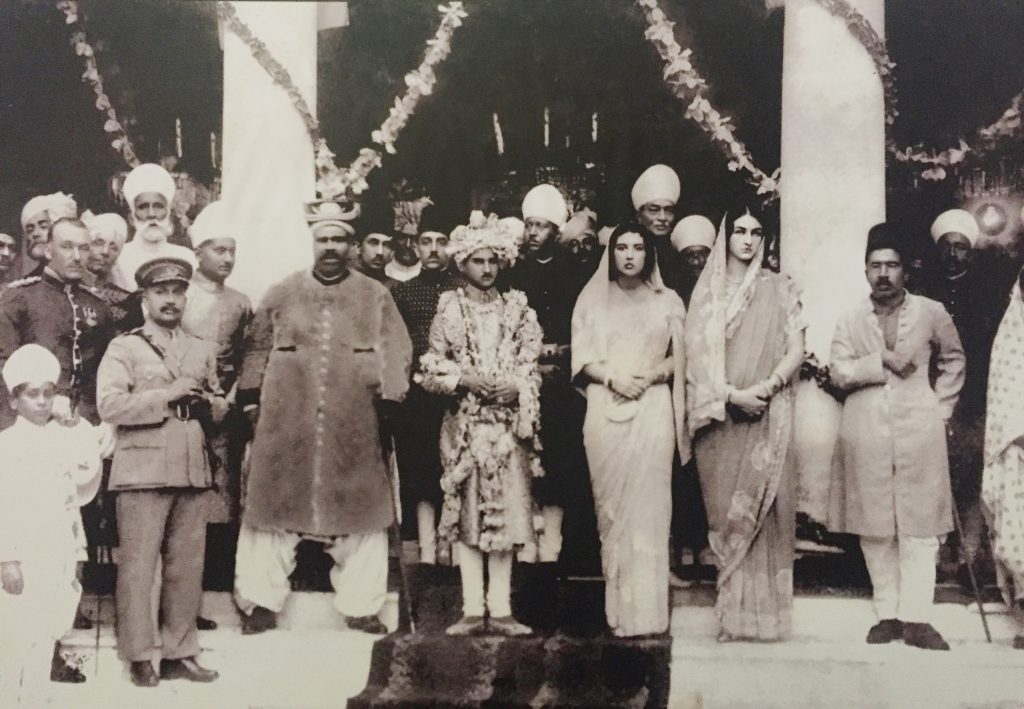
Wedding ceremony of Mir Faiz Mohammad II in 1932. Mir Ali Nawaz (third from left), Mir Faiz Mohammad II and guests, Princess Niloufer, Princess Durr-e-Shehvar, the Nizam of Hyderabad (Asaf Jah VII). (Photo: Courtesy of Mir Mehdi Raza).
“The protruding balcony, or jharoka, on the first floor,” explains Dr Naeem, “is a typical feature in the palaces and havelis of Rajasthan. Since this particular one faces towards the open grounds within the boundary of the bungalow, it is quite possible that it may have been used for ceremonial purposes by the royals, for public sightings, as was the tradition among the Mughals, and British royalty as well.” The Endowment Fund Trust (EFT) is currently repairing the pillars of Suffaid Mahal’s veranda. “We are using bricks from Rahim Yar Khan,” explains Hamid Akhund, secretary of the EFT, “as these are of the required thickness and are made of earth that doesn’t contain salts.” EFT is also in the process of rebuilding a boundary wall around Suffaid Mahal.
In the 1890s, Mir Faiz Mohammad’s son, Mir Imam Bux, hired a French nanny for his firstborn, Mir Ali Nawaz. The house built for her became known as Mandam Waro Bungalow, or Madame’s Bungalow. This home of Mademoiselle de Flo is one of Kot Diji’s best-kept secrets. It exudes a quaint and understated charm, owing to its smaller scale. Yet its exterior displays, arguably, the most intricate carvings and stucco work of all the bungalows in Kot Diji. Dr Naeem describes it as being “less Anglo and more oriental.” She says it is possible that the other bungalows too had carvings as intricate, and that they may have been spoiled due to alterations in the name of ‘renovations.’
Two opposite ends of this symmetrical redbrick structure open up into entrances while the remaining two ends have latticed verandas. Dr Naeem explains that deep verandas were a traditional feature of bungalows in Sindh, as they provided shade from the tropical sun and at the same time allowed the provision to enjoy the outdoors. The roof of Madame’s Bungalow is furnished with a small pavilion where Mademoiselle de Flo undoubtedly spent many a summer night. Geo-climatic conditions in the plains necessitated an architectural layout that, in light of the large retinue of domestics employed, would have allowed minimal privacy. Mir Mehdi recalls little or no privacy in the time he spent in Takkar Bungalow as a child. Dr Naeem points out, “the notion of privacy would have been very different for the people of those times and places than what we perceive in our urban context.”
In the end, it all proved worthwhile; Mir Ali Nawaz, reared by a French nanny, went on to attend Aitchison College, followed by the Imperial Cadet Corps in Dehra Dun. In 1921, he was inducted in the Chamber of Princes, in Delhi. Madame’s Bungalow, now empty and neglected, is in a state of disrepair and has not seen any conservation work. Mohan Lal Ochani, Project Director at the EFT, says that the main problem afflicting heritage sites across the province is that of rising dampness. “There are several methods of dealing with this,” he explains. “We can either inject the structure with synthetic material that prevents salinity from affecting the paint (also known as damp proofing), or,” he continues, “we can use the Aquapol system.” This groundbreaking new method, invented in Austria, involves the installation of an antenna-like device in the ceiling of a building. The device uses wireless technology to dehydrate the walls above and below ground level. It has a coverage area of 500 square metres and costs Rs. 1,595,000.
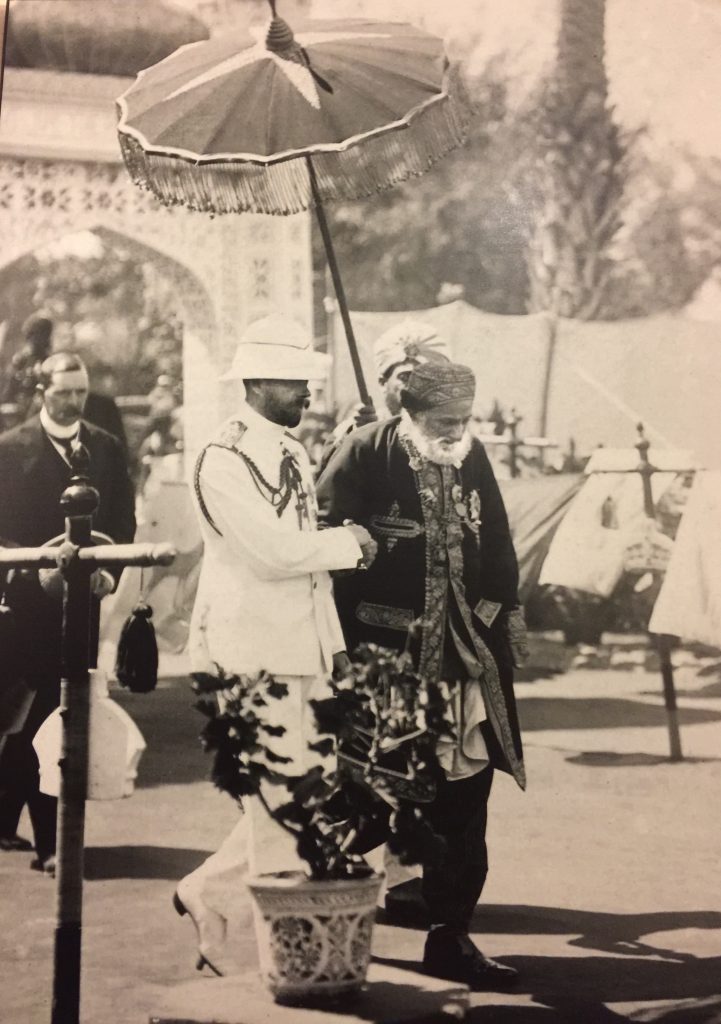
King George V and Mir Faiz Mohammad I in Khairpur House, Karachi. (Photo: Courtesy of Mir Mehdi Raza).
Also in a state of decay is Shahi Mahal, the court of Mir Faiz Mohammad I, constructed in the 1890s. It stands to the northeast of Kot Diji, adjoining the nearby village of Abad. Unlike the other bungalows, which are located inside Kot Diji, Shahi Mahal is surrounded by agricultural fields and as such, has a pastoral feel. It remained a court until the 1920s, when, under the reign of Mir Ali Nawaz, Khairpur State adopted the British legal system. The frescoes on its interior are more detailed than any other in the current bungalows of the Mirs of Khairpur. And unlike any of the other bungalows, the ceiling of its main hall is arched. The exterior has, on three sides, porticos varying in detail and design, which serve as main entrances for the public. On the fourth side, which is the back of the building, is a columned veranda, at the corner of which lies a segregated entrance for women: a stairwell leading to the upper level. This stairwell has crumbled and all that remains of it is a pile of bricks. Referring to the smaller rooms/wings that surround the main hall of audience, Dr Naeem explains that these were either used for “private meetings and conversations that could not be carried out in the main public hall,” or as “resting chambers by the royalty.”
A similar concept applies to the layout of Faiz Mahal, Mir Faiz Mohammad I’s court in the town of Khairpur, also built in the 1890s. “Its east wing,” explains Mir Mehdi, “consists of royal chambers, for the sovereign to prepare for royal ceremonies, as well as six waiting rooms.” The west wing, on the other hand, comprises eight waiting rooms for high-ranking courtiers, nobility and visiting foreign dignitaries. “On the first floor,” he continues, “are two corridors overlooking the darbar from either side, from where the zenana would watch the proceedings. The central tower contains two rooms, which were formerly the library and billiard room.” On the second floor, at the top of the central tower, lies a room that provides views of the garden and city. In the hall of audience, a photo of the wedding ceremony of Mir Faiz Mohammed II in 1932, shows the Nizam of Hyderabad (the bride’s cousin) in attendance, accompanied by his two famous daughters-in-law – Princess Durr-e-Shehvar (daughter of Abdul Hamid Khan, Turkey’s last Ottoman Emperor), and her cousin Princess Niloufer, who would, in the course of that decade, be renowned internationally for her beauty.
Behind Faiz Mahal lies Dilkusha Manzil, once a zenana, but now used by the Deputy Commissioner of Khairpur as his office. In the vicinity of the Mahal is the Summer Laandhi, a guest house where, according to Mir Mehdi, Lord Kitchener briefly encamped at some point during his tenure as commander-in-chief of the Indian Army, between 1902 and 1911. An orchard near Faiz Mahal housed a prison in the days of the Khairpur State. “Prisoners used to assist palace staff and gardeners until the system was modernised and the jail was turned into a technical training institute for convicts,” says Mir Mehdi. “The products that were made included blankets, which were sold to the military, and other items of basic need. The income from the sale of these was divided into two equal portions. One was provided to the families of the convicts as a means of support, while the other half was collected and handed to the prisoner upon release.”
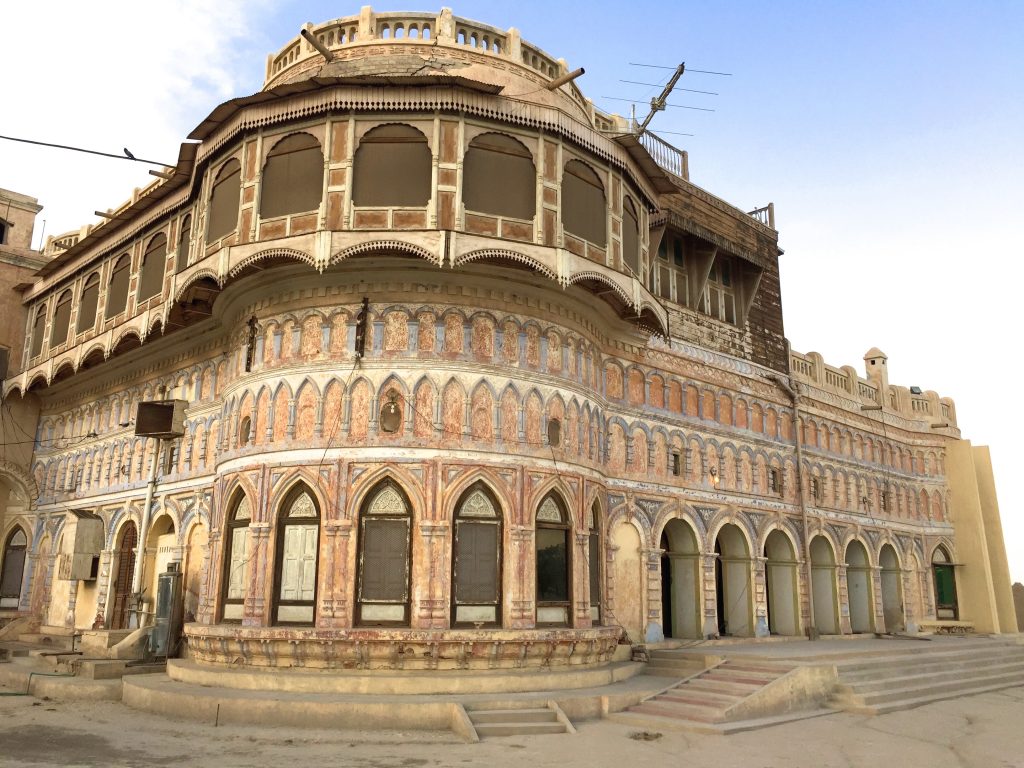
Takkar Bungalow was built in the 1890s to accommodate the guests of Mir Faiz Mohammad I.
Mir Ali Murad II, Mir Mehdi’s father, currently resides in Faiz Mahal. He ascended to the throne in July 1947, shortly before Partition, at the age of 14, after which he attended Cambridge University. “The decision of whether to remain independent or join India or Pakistan was a burden thrust upon him at a young age,” explains Mir Mehdi. “There was immense pressure on the family, from the British, to join Pakistan, as they felt it would be beneficial for us.”
The family tradition of living in tents had faded away by the 1930s, during the reign of Mir Faiz Mohammad II, who, having attended Mayo College in Ajmer, followed by Oxford University, was more Anglicised than his predecessors. Mir Mehdi himself attended the State University of New York (SUNY), from where he was suddenly called to the front lines in 1995 to help deal with a territorial dispute. The husband of the then sitting prime minister, had made attempts to purchase Khairpur House in Karachi as well as the one in Lahore, explains Mir Ahmed. “He went so far as to threaten to forcefully occupy these properties. But instead,” laughs Mir Ahmed, “the only thing he occupied was a prison cell, after his wife’s government fell.”
The residents of the village of Kot Diji are predominantly Jaths, Khashkelis, Chandios, Lasharis and Gopangs. Some of them are descendants of individuals who had been in the service of the Mirs over a century ago, as accountants or munshis. “Some people work in banks, while others run dhabbas,” says Mir Ahmed, “but there is still a lot of unemployment. And there are power outages for 12 to 18 hours everyday.” He explains that the flour mills that have been put up outside Kot Diji have provided some locals with work. Gopangs tend to be peasant farmers and Jaths have taken up jobs at stone-crushing plants set up by Sachal Engineering Works (Pvt) Ltd. Pointing to the limestone buttes around the southern and western peripheries of Kot Diji, Mir Ahmed explains that these, along with others in the Mehrano and Nara regions, had been leased out by the Mirs to the Frontier Works Organisation as quarries.
Sher Khan Rajput, a labourer, makes his way home in the long shadow of the fort at the close of day. Although his children are educated, he says that the Mirs are his family’s only hope and guiding light. While Mir Mehdi maintains a distance from politics, his cousin, Mir Shahnawaz Talpur (also known as Mir Shaanar) made his political debut in the 2013 general elections. “Both Mir Mehdi and Mir Shaanar are honest men who treat their people in a respectful and just manner,” reflects Rajput. “This is all that matters to me.”
The writer is a staffer at Newsline Magazine. His website is at: www.alibhutto.com


